#Original Fried Cheese Curds
Explore tagged Tumblr posts
Text
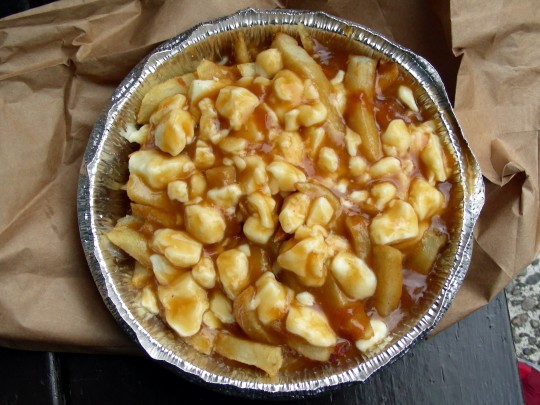
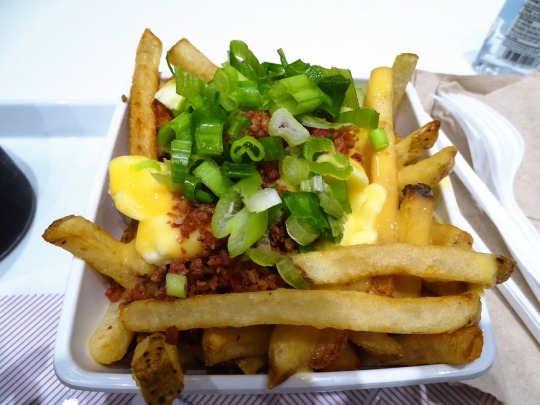

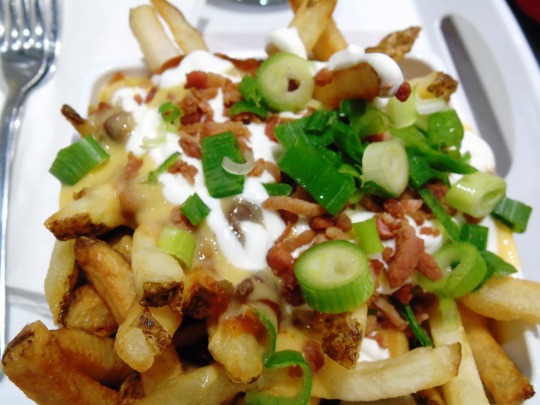
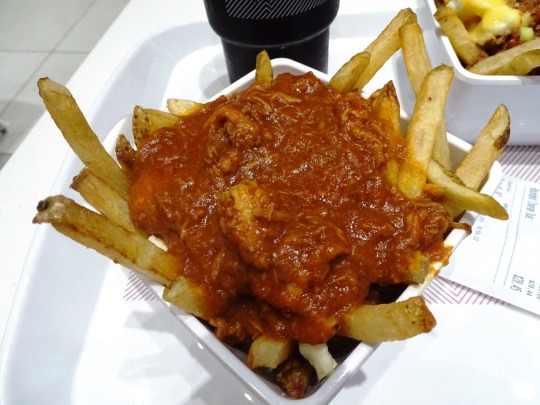



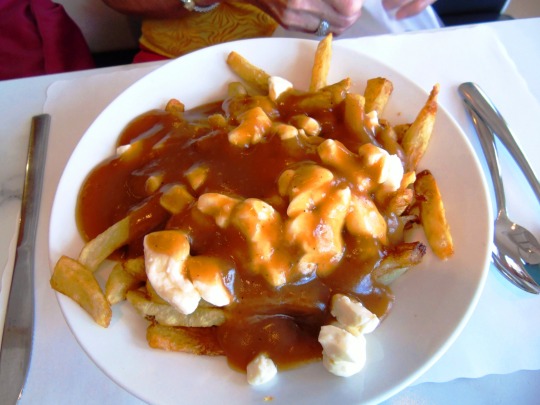
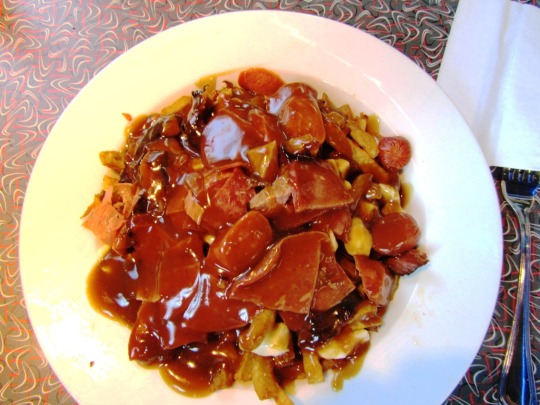
National Cheese Curd Day
National Cheese Curd Day was created by Culver's, a fast-food restaurant that started in Wisconsin that is located mainly in the Midwest, that as of 2020 has restaurants in 25 states. One of their most popular menu items, their cheese curds, are made with white and yellow Cheddar cheese. The fresh cheese curds—which they source from LaGrander's Hillside Dairy in Stanley, Wisconsin—are breaded with their signature blend of herbs and spices and then deep-fried. Culver's sold over 17.7 million orders of cheese curds in 2015, and over 28 million orders in 2018. During the month of October, when they hold National Cheese Curd Day, they offer chances for people to win cheese curds and other prizes. They've even given away a year's supply of cheese curds as their grand prize.
Cheese curds are popular in the Midwest, particularly in Wisconsin. They also are common in Quebec, Canada. Cheese curds are fresh, made by separating the curd from whey during the cheese-making process. Instead of going through the whole process, where a block of cheese is made, a solid curd of cheese with a milky flavor is formed. Cheese curds are mainly made of young Cheddar, either white or yellow, although some are made from mozzarella, Muenster, Colby, or Monterey Jack cheese. Fresh cheese curds are moist and rubberlike and will squeak when eaten when their elastic protein strands rub against tooth enamel. They begin losing their squeakiness after 12 hours and are no longer considered fresh about two days after being made. They are rather mild in flavor with a bit of saltiness and are often flavored with dill, garlic, spicy Cajun, taco seasoning, ranch, or jalapeno.
Cheese curds are commonly eaten as a snack or appetizer. Not only can they be eaten fresh, but they can be deep-fried, after being covered with a breading or batter—sometimes a beer batter. They are often then dipped in marinara sauce, ketchup, or ranch dressing. Deep-fried cheese curds are popular at state fairs, carnivals, and bars. They are also common at some fast-food restaurants, Culvers and A&W being two that offer them. Cheese curds are also used to make poutine. No matter if you eat deep-fried cheese curds at Culver's today, or enjoy them somewhere else or made in another manner, you are sure to find National Cheese Curd Day most enjoyable!
How to Observe National Cheese Curd Day
Some ways to observe National Cheese Curd Day include:
Pick up some cheese curds at Culver's. Watch their social media accounts for chances to win cheese curds and other swag.
Have some cheese curds at another restaurant, at a bar, or at a carnival or fair.
Pick up some fresh cheese curds at a store or shop, or make your own.
Make your own deep-fried cheese curds.
Plan a trip to the next Cheese Curd Festival.
Source
#Pulled Pork Poutine#National Cheese Curd Day#street food#restaurant#travel#Canada#Le Roy Jucep#Poutine 911#Drummondville#Québec#Montréal#vacation#original photography#15 October#NationalCheeseCurdDay#Meat Lovers Poutine#Butter Chicken Poutine#fries#gravy
4 notes
·
View notes
Text

The Foods of Dragon Age: The Veilguard
This covers all the new foods mention in the game, unless noted otherwise, these foods are considered universal as they don't have a specific place of origin mentioned.
New Ingredients:
Alubia carilla - Antivan, aka blacked eyed peas
Antivan Lemon Thyme
Apricot
Cheese Curds
Chocolate, Dark
Clinging Morsel - a hearty fungus that is common in rural cuisine
Cow Heart
Cream, Heavy
Dragon's Bounty - known for its health benefits, it has tough green skin that opens and reveals dozens of tart arils.
Dragon Pepper - Rivain
Dragon Root
Dwarf Spice Collection - contains eight different spices.
Flax Seed
Figs, Purple
Ginger Root - a popular ingredient in Qunari cuisine
Gingerwort Truffle - common in the Anderfels and the Arlathan forest. When made into a tea it can have some magical side effects.
Green Cabbage
Horned Melon
Human Spice Collection - a collection with two spices
Kale
Lineseed
Mangos - Tevinter
Melon
Nocen Bass - a hearty denizen of the Nocen Sea
Nocen Shrimp
Olive Oil - Antivan
Pineapple - Tevinter and Rivain
Potatoes, New
Potatoes, Sweet
Pumpkin, Warty
Rialto Trout - a fish featured in both Antivan and Rivaini cuisine
Rivaini Pitaya - a colourful fruit with a sweet, delicate flavor. Though pitaya refers to dragonfruit family, the fruit doesn't look like dragonfruit.
River Salmon
Saffron
Sea Bass
Seere Peppers - Rivaini
Short-grain Rice - Antivan
Spearmint
Spicy Spice Collection - contains fourteen jars
Spring Onions
Striped Cod
Sugar, Brown
Sweetmelon
Tomatoes, Cherry
Vinegar, Dark
Vinegar, White
Walnut
Yam
New Foods:
Aged Antivan Cheese
Antaam Provisions
Antivan Dressing
Antivan Seafood Soup - uses sea bass, nocen shrimp, striped cod, squid, saffron, and salt
Apple Cake - Fereldan
Apple Cheesy Butter Noodles - Fereldan, a recipe made by Harding
Apple Dumplings - Fereldan
Apricot Liqueur
Armada Special - a Rivaini sandwich comprised of meat and cheese, it can have greens, pineapple, and more meat and cheese added. Or one can make it "Nevarran" meaning vegetarian.
Bran Cookies
Breaded Cheese Wands - Rivain, sticks of cheese breaded
Breadstick
Bronto Steak
Bug-cakes
Candied Sage Leaves - a popular Nevarran snack
Carta Fries - a Riviani dish, served as a side
Cheesy Toast
Chocolate Covered Strawberries
Churro - Antivan
Cider Porridge
Citrus Bagna Cauda - Antivan, a citrus sauce with anchovies
Coffee Ice - a frozen Minrathous treat, served with cream and toffee sauce on top. It is "like snow" but tastes of coffee
Cucumber sandwich
Dalish Seafood Soup
Deep Roads Crispers - a Rivaini dish
Demon-hair pasta
Eel Soup - Qun
Elderberry Pie - served in Ferelden and Tevinter
Elfroot Jelly
Fish Head Stew - Qun
Fish of the Day with Pear Slaw - Tevinter
Fish-fry
Free Marches Mash-up - a Rivaini dish
Fried Bread
Fried Bread with Herbs
Fried Leeks and Potatoes
Fried Peppers
Fry-bread - Tevinter
Gooseberry Pie
Gravy on Fish
Greens - salad
Greens with Antivan, Orlesian, or House Dressing
Griddle Cake
Grilled Fish Kebab
Grilled Halla - Dalish
Grilled Skewerd Squid
Grilled Treviso - Antivan, a fish named after the city
Grilled Treviso with Citrus Bagna Cauda
Hal's Fried Fish - Tevinter
Halla Cakes - Dalish
Ham and Herbs
Ham and Jam Slam - a Fereldan sandwich comprised of toast, butter, ham, and jam. Made by Harding.
Hazlenut Torte - Nevarran
Honey Cake with Figs - Tevinter
House Dressing - a Rivaini dressing
Isskap - a Qunari dish, that uses melons
Jam Pudding - Fereldan
Jam Tart - Fereldan
Jam, Apple
Jam, Cherry
Jam, Strawberry
Khachapuri - Tevinter, there is a three cheese variety
Lavender Cream - Antivan
Mince Pie
Mutton Stew - Fereldan
Mystery Stew
Nevarran Tomb Cheese
Non-Seafood Paella - Antivan
Noodles and Gravy
Nordbotten Cream - made of brined sheep's milk from Nordbotten
Orange Liqueur
Orlesian Dressing
Orlesian Sauce
Pasta Made of Peppers and Oil
Peanut Butter and Sausage Special - Tevinter
Pear Slaw - Tevinter
Peppered Steaks
Poached Crustaceans - Tevinter
Pork Dumplings - Fereldan
Pork Hand Pies with Fresh Herb Sauce - Tevinter
Potato Stew
Poutine
Rarebit - Nevarran
Raw Oysters on Ice with Lemon and Mint - Tevinter
Rhubarb Pie - Tevinter and Fereldan
Roasted Cabbage
Roasted Cabbage and Gravy
Roasted Chicken
Roasted Chicken Salad
Robust Loaf - a crusty, wholesome brown bread
Rolled Noodles
Salted Meat, Halla
Sauced Eels - Qunari
Sausage Sauced with Nut Butter Stuffed in a Bun - Tevinter
Savory Pie with Spinach - Tevinter
Scorpion Pasta - Tevinter
Scrambled Eggs
Scrambled Eggs and Gravy
Sea Monster Kebab - Rivaini
Seafood Paella
Seleny Ham - Antivan
Smoked Trout
Souffle
Spiced Fried Lentils - Tevinter
Spiced Porridge
Spit-Roasted Nug - Tevinter
Strawberry Tart
Street Meat
Sugar-biscuit Candy
Tarta de Limon - Antivan
Taste of Ferelden Bread and Cheese Spread
Tentacle Salad - Tevinter
The Divine's Hat - An Orlesian soft cheese molded to resemble the Divine's crown.
The Revered Mother's Knickers - Fereldan
Treviso Ham - Antivan
Turnip Stew - Fereldan
Vanilla and Nutmeg Tart
Venison Souffle
White Sauce
Wild Meat and Mushrooms - Dalish
Yam and Jam Slam - a Fereldan sandwich comprised of toast, butter, yam, and jam. Made by Harding.
Zeff's Fried Fish
New Drinks
Andoral's Breath - a type of coffee common in Treviso
Antivan Heritage Brandy
Antivan House Wine
Aromatic Coffee - Antivan
Assembly Ale - Dwarven
Cioccolata Calda - Antivan
Daisy Fun-Time Lemon Gin - Antivan, a juniper spirit flavoured with local flowers and fruit.
Dew of the Dales - Elven, Antivan. Spirits for the spirited, an elven elevation of the brewing arts only sold in Antiva.
Dock Town Homebrew - Tevinter
Dragon Piss Ale
Dwarven Stout - an Orzammar recipe, brewed by the dwarven Ambassadoria
Fire Brandy - used to flambé desserts
Ginger Tea
Gingerwort Truffle Tea
Grappling Hook - a white liqueur with hints of elderflower. Served with three coffee beans
Halla Milk
Kirkwall Select 9:36 - after the Kirkwall Rebellion, few barrels survived.
Lavender Tea
Lemon Gin - Antivan
Minrathous Red - hints of plum and spices
Minrathous White - a light and refreshing drink for humid Tevinter summers
Nevarran Red
Pomace Brandy - Antivan, brandy made from the pomace leftovers of wine making
Qun on the Rocks - Antivan, rum is matched with salt water and presumably seasonal fruit from Par Vollen.
Rivaini Moonshine - home-distilled Rivaini moonshine not for the faint of heart or stomach
Starkhaven Lager
Teven Lager - popular Dock Town amber brew
Vint-6 the common Red - thick and sweet, it is served by the sip. Tradition says that the more who partake, the greater the fortune
Vyrantium Brandy
#dragon age#foods of thedas#dragon age the veilguard#dragon age 4#datv#da4#anderfels#antiva#dalish#nevarra#rivain#tevinter#long post
317 notes
·
View notes
Text
Hetalia characters with dishes typical for their country - part 1 (part 2 here)
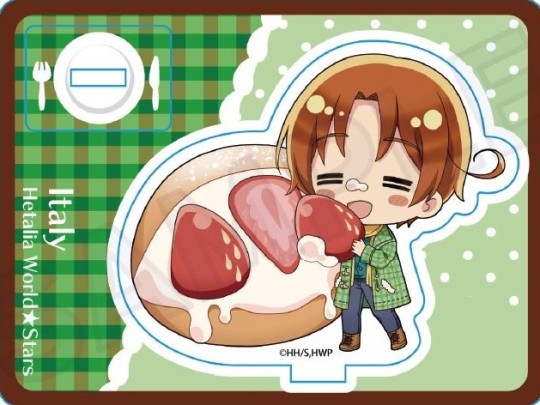
Italy: Maritozzo (cream bread) -> This Roman milk bread is said to be dated back to times of Ancient Rome. The baked good is filled with generous amounts of whipped cream and somtimes decorated with fruit or pistachio. Young man also used it in courtship by hiding jewellery or a ring in the filling.
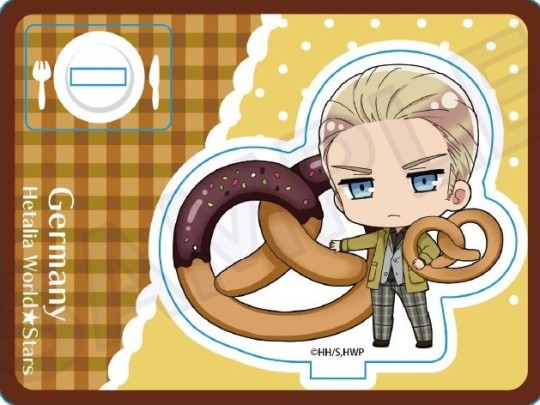
Germany: Breze(l) mit Schokolade (chocolate dipped pretzel) -> A baked pastry with sweet or salty toppings, best known for its distinctive symetrical, knotted shape. Dipped in chocolate the soft pretzel is a popular snack at funfairs and markets, but there are also small, crispy pretzels that are to be eaten like crisps/chips.

Japan: 和菓子 (wagashi; plant based sweet) -> Originally meaning "Japanese confectionery" the term now refers to a traditional dessert made from plant based ingredients. It's artful shapes are influenced by season, nature, or even poetry.
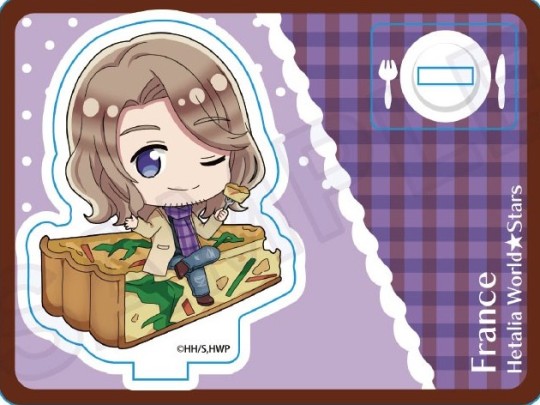
France: Quiche Lorraine -> A savoury tarte traditionally made with a filling of eggs, heavy cream, ham, and bacon. Today cheese is often added, though it is controversial among professionals. (In the drawing there seems to be leek added too which is not mentioned in the original recipe either.)
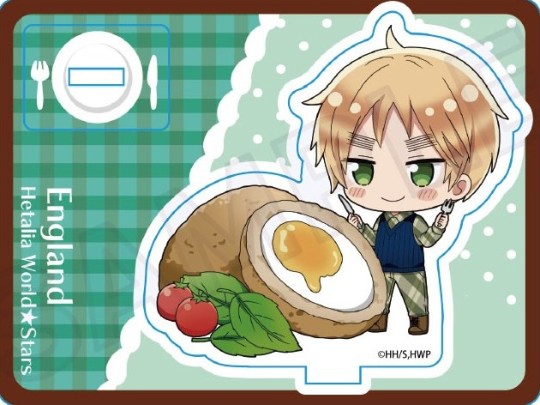
England: Scotch Egg -> Supposedly inspired by the Indian nargisi koftas, this dish consists of a hard-boiled or soft-boiled egg wrapped in pork (sausage meat) which is coated in breadcrumbs and then baked or deep-fried. Often served in pubs and a popular cold snack as well.
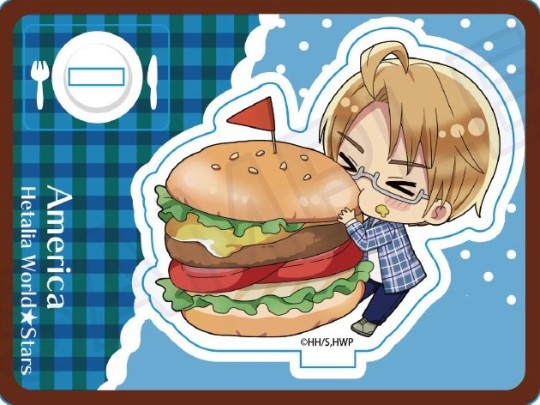
America: Hamburger -> A popular fastfood consisting of a patty (traditionally made from ground beef) between two halfs of a sliced bun. There are countless variations made with all kinds of additional ingredients and condiments, including expensive high-end versions with edible goldflakes.
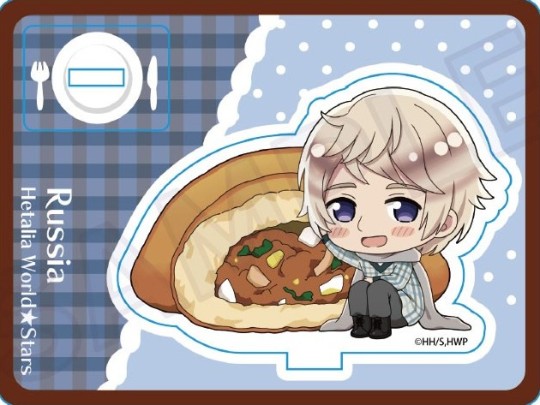
Russia: пирожки́ (Pirozhki; stuffed bread) -> This popular street food is a baked good made from yeast-dough is typically boat-shaped and filled sweet or savory with meat, vegetables, fruit, jam or tvorog (an Eastern European fermented milk product with a consistency similar to curd cheese)
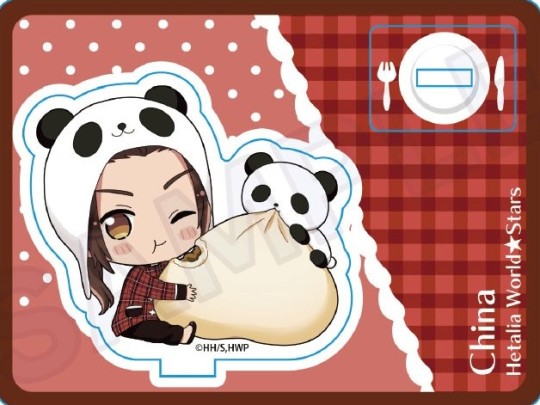
China: 小籠包 / 小笼包 (Xiaolongbao; steamed bun) -> Steamed dumplings made from leavened or unleavened dough traditionally filled with minced pork, traditionally eaten for breakfast. The top of the dumpling is closed by folding and pinching it. Authentical dumplings have at least 14 folds, preferably 18.
#aph england#aph america#aph france#aph russia#aph germany#aph italy#aph japan#aph china#hws italy#hws germany#hws japan#hws england#hws america#hws france#hws russia#hws china#hetalia#riva.edit#source in the source#full disclaimer I tried my VERY best to find everything but if I made a mistake pls let me know (politely)
195 notes
·
View notes
Text
Noodles and cottage cheese was the defining dish of my childhood. I think of it as the Eastern European version of boxed macaroni and cheese — a culinary staple of youth. Whenever I bring up noodles and cottage cheese in conversation, it always elicits a strong reaction: either there is an immediate enthusiastic nostalgia associated with it, or instant confusion and/or disgust. I’ve found little neutrality on the subject.
The polarity of responses inspired me to do more digging on the subject of this dish’s origins. At first, I thought noodles and cottage cheese must have started out as deconstructed kugel. Sources cite that noodle kugel originated in Germany about 800 years ago. The point at which cottage cheese entered the picture remains unclear. There is no evidence that kugel birthed noodles and cottage cheese or vice versa. In fact, in our home we had noodles and cottage cheese, but we never had noodle kugel. While the origins of the dish are murky, noodles and cottage cheese is still fairly commonly eaten across Eastern Europe in and out of Jewish kitchens from Poland, to Hungary, to Russia. Both my parents grew up in the former Soviet Union, and both remember being fed this dish, albeit with farmers’ cheese (a close cousin of cottage cheese). In the United States it can be found being prepared in many Jewish American kitchens, even in the homes of families that have lived here for a few generations.
In Yiddish, the dish is called “lokshen mit kaese,” and you can track down recipes made with homemade lokshen (noodles). That said, recipes are generally scarce and arguably they’re not needed. The dish’s essential components are obviously noodles and cottage cheese; but preparations vary with the addition of fried onions, or sour cream, or butter, or copious amounts of black pepper. In non-kosher cases you’ll find that bacon is often added. The type of pasta that is used is up to the cook. You can make it with bow-ties, macaroni, penne, fettuccini or whatever you prefer. It tends to fare best when made with a pasta shape that has nooks and folds that can grip onto the cottage cheese, and with a cottage cheese that is smaller in curd.
When I was growing up, my mom would make noodles and cottage cheese several times a week, and often the leftovers went into a Tupperware for my lunch the next day. She had a unique style of making this minimalist dish. Her preferred noodles were penne or fusilli, and her preferred technique was to drain the pasta, add it back to the hot pot, add cottage cheese, and lastly she’d add tons of grated Parmesan – her not-so-secret ingredient. She would stir everything together until a makeshift cream sauce formed around each noodle. She developed a reputation among my friends for making the best noodles and cottage cheese.
It wasn’t just at home that I enjoyed this dish. I vividly remember my first sleepover at a friend’s house. We never actually went to sleep, and her parents came into her room multiple times to scold us for giggling and staying awake. The next day we groggily played until we were fed lunch. We sat down to the table and were served big heaping bowls of noodles (shells) and cottage cheese. After a sleepless night, being served such a familiar dish away from home was instantly comforting. I ended up spilling the entire contents of the bowl all over my lap and onto the floor, much to the chagrin of my friend’s parents. This was not the first time shame was linked to this dish.
I grew up going to Jewish day school, but for high school I attended a public school that had only a handful of Jewish students. It was there that I uncomfortably learned that not everyone thought noodles and cottage cheese were so great. I’ve always been curious about food that can bring us shame and comfort in equal measure: I’ve often found that foods that we were mocked for eating when we were young are often the source of great pleasure as adults. Those of us who come from immigrant families might have been made fun for our family’s “strange” or “smelly” foods. By and large, immigrant food tends to be food that has come from necessity. We use what we have and make the most of it; that includes organ meat, all the fish parts, funky flavors, strong spices, fermented vegetables and inexpensive dairy products. And that same food that we might get teased for is often the food that we love the most. OK, so noodles and cottage cheese is not nearly as daring as a fish head stew or a cow tongue sandwich, but it’s still not a mainstream dish.
Why do so many people think it’s so strange? Is it cottage cheese’s inherent bad rap? Is it due to mixing something cold with something hot? Is it the lack of flavor? I needed to make it again, and I needed to make it for someone who had never tried it before. Conveniently, my husband never grew up eating noodles and cottage cheese.
I went to the store and picked up a container of small-curd 4% cottage cheese and a box of bow-tie pasta. Once the pasta was cooked and drained, I put it back in the hot pot. The second the cottage cheese touched the bow-ties, a familiar smell hit me, taking me back to my parents’ kitchen. I instantly got hungry. Stirring the cottage cheese into the noodles, a sauce started to form. I seasoned it with generous amounts of salt and pepper, and a spoonful of sour cream. I filled two small bowls, and while still standing over the stove my husband and I took our first bites. For him, a fan of both pasta and cottage cheese, it was clearly disappointing. “That’s it? I don’t know about this…” he thoughtfully chewed. But he kept eating. He finished the small bowl, and then he had some more. That’s when I realized part of the appeal of noodles and cottage cheese: It grows on you. On its own, it’s not very exciting, but its cumulative effect is satisfying. For me, I took that first bite and instantly felt warmth. It tasted like home.
10 notes
·
View notes
Note
Can you show me food from Canada? 👀 And since your country is huge, maybe it can be specifically foods from Alberta? I don't know, you choose
HELL YEAH MAN!!!!
SO. pretty much inarguably the most famous dish to come out of canada is poutine, which consists of fried loaded with brown gravy (beef or chicken gravy) and cheese curds (it HAS to be cheese curds)

poutine is originally from central quebec, and while there’s a lot of arguments on who exactly invented it, it’s a huge staple of québécois culture!
another thing is bannock, which is a type of fried bread typically just made with flour, water, and some sort of fat.

bannock is a staple food to many of the indigenous peoples in canada, like the inuit, métis, and honestly just the first nations people of both canada and the states in general. technically it was introduced by european settlers, which does get a little iffy when you think about it considering yk. the fact they kinda messed with the food/diets of the indigenous peoples. but it’s still incredibly important to indigenous cultures and communities. (this is just a small blurb of its history, it and by extension the history of indigenous peoples and european settlers is really interesting so i encourage you to look it up if you want)
i feel like when people think of canada they mostly just think of the west and central canada? but that kinda ignores the fact that. the maritimes exist. lol.
in nova scotia one of the biggest industries is lobster fishing, which fun fact you can’t actually do recreationally. while lobster rolls aren’t explicitly a canadian invention, being more of a “lobster fishermen started making them on the east coast around the 1890s, then it got popular in places like connecticut, then it got popular in canada” situation, they’re still incredibly popular and arguably one of the most famous foods in nova scotia since. there’s a lot of lobster.

it’s actually a little difficult to come up with stone cold “this is a recipe originating from this specific place” foods, but one thing from the prairies that did originate in the prairies is saskatoon berry pie, which like the name suggests, has a filling of saskatoon berries (the best description you’ll get if you haven’t had one is think of a blueberry with a slight almond flavour)

saskatoon berries are native to the prairies and prairie-adjacent provinces like the northwest territories, the yukon, and british columbia (which makes sense when you consider these fuckers can be a-ok when it’s like -50° C outside)
oh and fun fact, the actual city of saskatoon’s name can actually be traced to the cree word for the saskatoon berry, “misaskwatomina” (like an orange the fruit/orange the colour situation)
for alberta, i can think of less of a specific dish and more of a type of food in general. alberta is really known for the beef that’s. grown? raised? idk. and the reason it’s so high quality is because half the freaking province is just. grasslands. which means that cattle have a lot of open space and food to graze on!

(not even kidding, if you drive to the rocky mountains a decent 60% of the outside of the drive is just. this)
(last thing from the prairies i promise) so british columbia has these things called nanaimo bars, which is a three layer dessert (first being a base of wafers, coconut crumb and nuts, second being a custard icing, and third being chocolate ganache) that originates in, shockingly, the city of nanaimo.

nanaimo bars started to get really popular after the second world war, with its name first being used in 1953. they were actually named as canada’s favourite confection a while back!
i feel like it would be a crime if i didn’t include literally our national dessert, idk maybe i just have a really bad sweet tooth because half these damn foods are dessert 😭
canada’s national dessert is a butter tart, which is quite literally a tart with butter, sugar, syrup and eggs (and if you’re feeling fancy something like raisins or walnuts)

kinda like lobster rolls, the exact origin of butter tarts is a little shaky, because while the first publishing of the recipe was in ontario, it’s actually more likely that it originates from french women who were sent to quebec back in the 17th century, and made a version of the french sugar pie with what they had on hand. (again, the history is actually kinda cool for this)
i’d get publicly stoned to death if i didn’t mention maple syrup, you know, one of the most canadian things next to hockey and tim hortons. but i’m gonna also put maple taffy with it, since they have the exact same base ingredient.
now as much as my albertan ass LOVES to clown on quebec, i have to admit maple taffy is actually pretty fuckin good. it’s made by heating up maple syrup and then pouring it on snow, and then “rolled up” with something like a popsicle stick.

it originates in quebec, but is also part of the culture of places like east ontario and new brunswick. (if you speak french or are from a french-speaking part of canada it’s also called “tire d'érable” or “tire sur la neige”)
there’s a lot more regarding the culture but this post is already way too long so i might make another one later KHDISHISHJV
and lastly i know that this is more about traditional foods but i NEED to include these:

for the longest time i had absolutely no idea that ketchup chips were a canadian thing, but apparently they are! not much to say here, they were made in the 70s and you can only get them in canada. (i hate ketchup and even i have to admit these go hard)
hopefully this was a decent list!! canada like i’ve mentioned has a lot of immigrants, so while we do have some more “traditional” canadian recipes, a lot of food here is also about not only sharing cuisine from where you’re from, but making it/developing it with the ingredients that are available here. if you wanna know more i’m happy to talk more about this stuff! i’m hungry now KHDPHVSOGAHDHJ
#scott has answered#i actually ended up doing quite a bit of research into this which was actually super interesting! especially from a guy who’s literally#never been to eastern canada. lol#ALSO i didn’t put this in but funny story. one time when i was in 8th grade we were actually making bannock for a class#and my group actually burnt the ever loving SHIT out of ours. oopsies#i dunno if counting alberta beef is cheating but it’s MY province and I get to decide what i show off
3 notes
·
View notes
Text
National food tag game
I decided to create a tag game.
Rules: Say which country you’re from. Make a list of foods from your country that you think everyone should try. Write a description of each food. Tag as many people as you like.
I’m from Canada. Here’s my list of foods from my country that I think everyone should try. The pictures are not mine. I found them on Google. All credit goes to the rightful owners.
Poutine

Poutine is a dish consisting of French fries, gravy, and cheese curds. It emerged in the Canadian province of Québec in the late 1950’s, though its exact origins are uncertain and there are several competing claims regarding its invention.
Donair

The donair originated in Halifax (the capital city of Nova Scotia, the Canadian province I’m from) in the early 1970’s. Donair meat is made from spiced ground beef sliced off a rotating cone. The toppings typically include chopped onions and tomatoes, while the distinctive sweet sauce is made from condensed milk, sugar, vinegar, and garlic powder (optional). All of these ingredients are wrapped together in a soft white pita.
Garlic fingers

Garlic fingers are an Atlantic Canadian dish, similar to a pizza in shape and size and made with the same type of dough. Instead of being cut in triangular slices, they are presented in thin strips, or "fingers". They are often accompanied by pizza and dipped in donair sauce.
Lobster roll

The lobster roll is a dish native to New England and Atlantic Canada. It can be served hot or cold. It is typically made with lobster knuckle, claw, and tail meat. The meat is served on a grilled hot dog bun. The filling may contain butter, lemon juice, salt, and pepper, with some versions replacing the butter with mayonnaise. Other versions may contain diced celery or scallions. Coleslaw and French fries are the typical side dishes.
Hodge Podge

Hodge Podge is a stew consisting of milk, cream, butter, and green and root vegetables. It’s essentially a vegetarian chowder, but it occasionally has meat in it. The version of Hodge Podge that I like consists of milk, cream, butter, potatoes, green beans, and carrots.
Maple syrup

Maple syrup is a syrup made from the sap of maple trees. In cold climates, these trees store starch in their trunks and roots before winter. The starch is then converted to sugar that rises in the sap in late winter and early spring. Maple trees are tapped by drilling holes into their trunks and collecting the sap, which is heated to evaporate much of the water, leaving the concentrated syrup.
Nanaimo bars

Nanaimo bars require no baking. They have three layers: a graham cracker crust with shredded coconut and cocoa powder, a sweet custard filling, and a chocolate coating. They have been a mainstay across Canada since the 1950’s. They were first made in the waterfront city of Nanaimo in British Columbia. They became even more popular in the late 1980’s after being featured at Expo 86, the World’s Fair in British Columbia.
Butter tarts

A butter tart is a flaky pastry with a filling consisting of sugar, egg, corn syrup or maple syrup, and butter. It’s baked and has a crunchy top. Common add-ins are pecans, raisins, and shredded coconut.
Butter tarts were common in Canadian pioneer cooking. The earliest published recipe for a butter tart is from Barrie, Ontario. It dates back to 1900 in the Women’s Auxiliary of the Royal Victoria Hospital Cookbook. Another early published recipe was found in a 1915 pie cookbook.
BeaverTails

BeaverTails is a Canadian restaurant chain, specializing in pastries known as BeaverTails, that is operated by BeaverTails Canada Inc. Its namesake product are fried dough pastries that resemble beaver tails. They are topped with sweet condiments and confections, such as whipped cream, banana slices, crumbled Oreos, cinnamon sugar, and chocolate hazelnut. They are also made in savoury variations, such as poutine and hot dogs.
The chain originated in Killaloe, Ontario in 1978 and opened its first permanent store in Ottawa two years later. By 2018, it had 140 franchise locations in six countries: Canada (the Maritimes, Newfoundland and Labrador, Ontario, Manitoba, Alberta, British Columbia and Québec, where the franchise is called Queues de Castor), the United States (New Hampshire, Michigan, Wisconsin, Tennessee, Arkansas, and Utah), the United Arab Emirates, Mexico, France, and Japan.
Ketchup chips

French fries and ketchup have gone hand-in-hand since the early 1800’s, but the combination really took off in the 1940’s with the rise of fast food and drive-ins.
Inspired by this classic combo, adding ketchup-flavoured seasoning to potato chips came to be sometime in the 1970’s. Each chip was dusted with tomato powder, garlic, onion, and spices, infusing smoky, salty, and sweet flavours with a tart bite into every crunch. Since then, millions of chip bags have been torn open and devoured by hungry Canadians.
Although a quintessential Canadian snack, the origins of ketchup chips are mired in mystery, with no one stepping forward to officially take the credit. At its simplest, it’s believed that this snack was invented by Hostess Potato Chips in the early 1970’s and sold exclusively to the Canadian market.
Digging deeper, it appears that the story could be more complicated. An American company in Pennsylvania, Herr’s Snacks, has reportedly been making ketchup-flavoured potato chips since the early 1980’s. A decade later, the Heinz Ketchup company got on board. They’ve since blended the brands to create Herr’s Heinz Ketchup Flavoured Potato Chips.
The bottom line? Although ketchup chips likely hold dual citizenship, it’s definitely a Canadian classic to the core. While the flavour tends to be scarce south of the border, it can be found in almost every Canadian grocery store. Millions of bags are produced each year by Frito-Lay, the parent company of Hostess. They are also sold by smaller Canadian-owned companies like Covered Bridge.
All-dressed chips

All-dressed is a popular potato chip flavour in Canada. It's a combination of four other flavours: Ketchup, Barbecue, Sour Cream & Onion, and Salt & Vinegar.
While the consensus is that the flavour originated in Canada, it is unknown who introduced it first. Yum Yum, a Quèbec-based company, is known to have created a variety of the flavour in 1978. The term "all-dressed" and its French equivalent toute garnie originally applied to pizza, meaning "everything on it", “deluxe”, or "the works". The term "all-dressed" extended beyond just pizza and found its way into the world of potato chips. Many early references to the flavour all-dressed are linked to pizza-flavoured potato chips.
An all-dressed chip called The Whole Shabang is produced by American prison supplier Keefe Group. It became available to the general public in 2016. Frito-Lay began selling all-dressed Ruffles potato chips that same year. In 2024, Co-op Food in the United Kingdom began selling a limited edition all-dressed variety crisp as part of their Irresistible range.
Tagging:
@gnarly-love
@miyagifangkai2
@freehaydenradio
@fireladybuckley
@fakesocialmediaa
2 notes
·
View notes
Note
What does Barton enjoy when it comes to food? Favourite meals, snacks, desserts, ect?
Hi, @oculusxcaro! Thank you very much for the ask!! It really warms my heart that you're interested in Barton enough to ask me questions about him, honestly {: But let me go ahead and stop dilly-dallying here!
One of the things that you should know about Barton is that he LOVES to cook and by extension, he also loves food, so he has multiple favorite meals / snacks / desserts. But let me get started with one of his main loves... and I say that only partially jokingly, haha. Chicken curry, specifically the kind that a certain indian restaurant in gotham makes called the Seven-Fold Bistro, is something you will catch him eating often as Marcy actually introduced him to this restaurant and got him to meet the owners. So, now he is friendly with them and they seem to like him, since he comes in a lot / he is very respectful to them. But yeah, that is his first favorite meal to have.
His second favorite is Goulash, because god, could Winslow make a good Goulash whenever he was staying with him. If you're not familiar with the dish, it originates from Hungary and is basically a stew that has Meat, stock, macaroni noodles, vegetables (particularly green peppers for Winslow's version), paprika, and spices in it. The fact that it always makes a lot of food is another reason why Barton likes it, as him and his kids will have leftovers they can eat for days. Lastly, french onion soup is his final favorite meal. It's honestly one of the foods that kept him from not being absolutely starving all the time through college, as a lot of college students are notorious for being broke due to the high costs of university + other factors, so it holds a particularly sentimental place in his heart.
I could only think of one favorite snack for him, though, and like any good Quebecker ( I'm kidding, I'm kidding lol ).... that is Poutine. I'll give you a brief description of it just in case any of you haven't heard of it. Poutine is basically a food that consists of french fries and cheese curds that are topped with a brown gravy. Some might consider it a meal, but Barton typically eats it as a snack, though Barton has vowed to only eat it whenever he ventures outside of gotham because the Poutine there, quote unquote, " tastes like a budget version of the real thing. "
As for his favorite desserts, Barton does happen to have a couple and I mean exactly two. Cheesecake and Chocolate Lava Cake. Chocolate Lava Cake because, well, it is so damn delicious in his opinion and Cheesecake because he once went to this medical conference where one of his fellow M.D.'s brought this red velvet Cheesecake to it + shared it with him and let's just say that after eating that, if Barton died right at that moment, he honestly wouldn't even care. He would die happy ( LOLL ). And I know you didn't specifically ask a question based on his relationships with other people, but it's kind of funny because he literally initially stayed in contact with this doctor ever since so that he could get a taste of it again every once in a while.
Which, she is pretty aware of and jokes about around him. I mean, he still cares about the Cheesecake, but he has come to like her as a person as well and the delicious cake she makes is just a bonus to her being a good friend to Barton now to be honest. Though there we go! I hope I fully satisfied your curiosity with my answer, and that you are happy with it. Thanks again!! ((:
#barton befriending someone just because he likes their cheesecake and wants to eat it again is so him though... LOL#his friends name is winifred btw but he calls her freddie because she's iconic like that#asks.
5 notes
·
View notes
Text

.
Canada = Poutine
Visit Canada = Try Poutine
The end.
Poutine is a dish of french fries and cheese curds topped with a brown gravy. It emerged in Quebec, in the late 1950s in the Centre-du-Québec region, though its exact origins are uncertain and there are several competing claims regarding its invention. For many years, it was used by some to mock Quebec society. Poutine later became celebrated as a symbol of Québécois culture and the province of Quebec. It has long been associated with Quebec cuisine, and its rise in prominence has led to its growing popularity throughout the rest of Canada. As such it has been called "Canada's national dish", though some critics believe this labelling represents cultural appropriation of the Québécois or Quebec's national identity.
5 notes
·
View notes
Text
s/o to @musesownmymind for tagging me 🥰
favorite colors: lavender, light blue, periwinkle, baby pink & turquoise
last song i listened to: slipping through my fingers by meryl streep and amanda seyfried
the song stuck in my head: fast cars and freedom by rascal flatts
three favorite foods: ice cream, fried cheese curds and shredded beef brisket
the last thing i googled: “jessica lowndes” (please ask me what a dinkleberg list is, i just found out about it and i can’t quit giggling)
dream trip: italy and greece, europe in general
anything i want right now: i want school to be done, homework is kicking my butt but like i love my classes… ya feel? 😂 i also want snuggles 😗✌🏼
i tag @that-one-random-writer @discount-shades
4 notes
·
View notes
Text
I'm not even surprised about the existence of Poutine (a dish consisting of french fries and cheese curds topped with gravy).
I'm just more surprised that the food originates from Canada because the recipe sounds American as fuck.
2 notes
·
View notes
Text










National Cheese Curd Day
National Cheese Curd Day was created by Culver's, a fast-food restaurant that started in Wisconsin that is located mainly in the Midwest, that as of 2020 has restaurants in 25 states. One of their most popular menu items, their cheese curds, are made with white and yellow Cheddar cheese. The fresh cheese curds—which they source from LaGrander's Hillside Dairy in Stanley, Wisconsin—are breaded with their signature blend of herbs and spices and then deep-fried. Culver's sold over 17.7 million orders of cheese curds in 2015, and over 28 million orders in 2018. During the month of October, when they hold National Cheese Curd Day, they offer chances for people to win cheese curds and other prizes. They've even given away a year's supply of cheese curds as their grand prize.
Cheese curds are popular in the Midwest, particularly in Wisconsin. They also are common in Quebec, Canada. Cheese curds are fresh, made by separating the curd from whey during the cheese-making process. Instead of going through the whole process, where a block of cheese is made, a solid curd of cheese with a milky flavor is formed. Cheese curds are mainly made of young Cheddar, either white or yellow, although some are made from mozzarella, Muenster, Colby, or Monterey Jack cheese. Fresh cheese curds are moist and rubberlike and will squeak when eaten when their elastic protein strands rub against tooth enamel. They begin losing their squeakiness after 12 hours and are no longer considered fresh about two days after being made. They are rather mild in flavor with a bit of saltiness and are often flavored with dill, garlic, spicy Cajun, taco seasoning, ranch, or jalapeno.
Cheese curds are commonly eaten as a snack or appetizer. Not only can they be eaten fresh, but they can be deep-fried, after being covered with a breading or batter—sometimes a beer batter. They are often then dipped in marinara sauce, ketchup, or ranch dressing. Deep-fried cheese curds are popular at state fairs, carnivals, and bars. They are also common at some fast-food restaurants, Culvers and A&W being two that offer them. Cheese curds are also used to make poutine. No matter if you eat deep-fried cheese curds at Culver's today, or enjoy them somewhere else or made in another manner, you are sure to find National Cheese Curd Day most enjoyable!
How to Observe National Cheese Curd Day
Some ways to observe National Cheese Curd Day include:
Pick up some cheese curds at Culver's. Watch their social media accounts for chances to win cheese curds and other swag.
Have some cheese curds at another restaurant, at a bar, or at a carnival or fair.
Pick up some fresh cheese curds at a store or shop, or make your own.
Make your own deep-fried cheese curds.
Plan a trip to the next Cheese Curd Festival.
Source
#Pulled Pork Poutine#National Cheese Curd Day#street food#restaurant#travel#Canada#Le Roy Jucep#Poutine 911#Drummondville#Québec#Montréal#vacation#original photography#15 October#NationalCheeseCurdDay#Meat Lovers Poutine#Butter Chicken Poutine#fries#gravy
2 notes
·
View notes
Text
#i love you superman i love you batman i love you spider-man i love you comic books#i love you american chinese food i love you american mexican food i love you american sushi#i love you marx brothers i love you buster keaton i love you cole porter#i love you rattlesnakes i love you armadillos i love you moose i love you grizzly bears i love you roadrunners#i love you orca whales i love you salmon i love you black widow spider#i love you jewish delis and soul food and greasy spoon diners
#I love you county fairs and unhealthy fair food#I love you northeast fall forests#I love you urban food diversity#I love you skeleton in a suit man that gave me a flyer for a restaurant in chinatown in nyc that one time
#i love you ursula k le guin i love you shirley jackson i love you long stretches of interstate 80 passing by open fields and sky#i love you stephen sondheim
#i love you jazz music i love you sandwiches i love you breakfast tacos i love you pre-2001 country music
#i love you california summer nights#i love you california poppies and western fence lizards#i love you sf bay fog#i love you monterey bay cypress trees and sea critters#i love you joshua trees#and so much more
#I love you floribbean food!!#I love you cornbread served as appetizers for public dinner events!!#I love you first friday celebrations!!#I love you cornhole/bag toss games!!
#I love you apple picking and hot apple cider
#I LOVE YOU NASCAR. SPORT STARTED BY RUNNING FROM COPS THAT HAS KEPT THE SPIRIT OF THAT ORIGIN TO THIS DAY#i love you gilded age i love you roaring twenties i love you slushies and corn dogs and popcorn and chili con carne and regional variants#of all of the above. i love you regional infighting over dumb shit i love you hurricane parties i'm#i love you rock and roll and soul and jazz and dixie and soulful and true country. i love you american folk stories#i love you john henry and paul bunyan and his great blue heifer and bigfoot and mothman
#I love you grilled sweet corn and fried cheese curds and jazz music#I love you Octavia Butler and Shirley Jackson#I love you marching band
anyways (I say this as someone who is deeply critical of the united states government, military, unchecked capitalism, police, etc) I am SICK of people treating america as if it has no cultural value or positives so….. I love u 85 million acres (bigger than italy) of national parks. I love u harlem renaissance. I love u groundhogs day. I love u sweet tea and fried chicken and jambalaya. I love u apple cider donuts and maizes on crisp autumn days. I love u 95k miles of coastlines and new england fisherman and hand knitted sweaters. I love u halloween where millions of people dress up and give candy to strangers and carve jack o’lanterns. I love u small talk and small towns and potlucks and bringing over casseroles to your struggling neighbors. I love u cowboys and ranch hands and arizonian cactus. I love u appalachian trail and dirtbikes and divebars. I love u sparklers and fireflies. I love u mark twain and toni morrison and emily dickinson and henry david thoreau. I love u rock n roll i love u bluegrass and hippies i love u jimi hendrix and nirvana and CCR and janis joplin. I love u victorian houses and jonny appleseed and john henry and mothman and bigfoot. I love u foggy days in the pacific northwest and neon signs and roadside attractions. I love u baseball and 1950s diners and soft serve. I love u native american art and pop art and poptarts. I love u blue jeans and barbecues and jazz musicians
96K notes
·
View notes
Text

Five of Montreal's best poutine spots - according to a local chef
Montreal-born chef Michele Forgione makes one of the best poutines in the city. Here are his top poutine picks in Montreal, from Chez Ma Tante to Ma Poulle Mouillée.
Piping-hot French fries topped with squeaky cheese curds and brown gravy: in Canada's Quebec province, poutine is tantamount to passion. The beloved dish has become emblematic of the province and opinions abound on which curds make the best topping or how the frying method affects the dish.
Legends about its origins are also plentiful. In a 2015 tourism campaign, the town of Drummondville, Quebec, claimed ownership of poutine, declaring that it was invented in the 1960s by self-proclaimed "l'inventeur de la poutine" Jean-Paul Roy of local restaurant Le Roy Jucep. Another legend states that a customer mixed cheese curds with French fries at restaurant La P'tite Vache in Princeville, Quebec in 1966. But the most prevailing legend points to the town of Warwick, Quebec, in the late 1950s, when restauranteur Fernand Lachance of Le Café Idéal exclaimed "Ca va faire une maudite poutine!" ("It will make a damn mess!") when a customer asked him to put cheese curds in a takeaway bag of frites
Read more...
0 notes
Text

Sure, there is nothing wrong with good old mustard, mayonnaise, and ketchup. But those classic flavors would be even more appreciated if given a rest for a while. And, in the meantime, here are ten condiments from all over the world that have been waiting on the benches for their day on the spotlight on your diner table. Did you ever hear about oyster sauce? Or lingonberry jam? Take a quick look and see if any of these flavor enhancers tempt you!

Let us start this list with a sauce that is served throughout the Balkan nations as a relish or a side dish. The so-called "Serbian Salsa", ajvar is a condiment made principally from sweet bell peppers and eggplants.
The relish became a popular side dish throughout Yugoslavia after World War II and is made of roasted peppers. Ajvar can be consumed as a bread spread or as a side dish. Ajvar has a few variations. One variation contains tomato and eggplant, and another green bell peppers and oregano.

Hoisin sauce gives a tangy glaze to any dish. Essentially a Chinese barbecue sauce, this condiment lies at the intersection of brown sauce and hot sauce. Peking ducks are almost always dressed with hoisin sauce.
This is a thick, fragrant sauce commonly used as a glaze for meat, an addition to stir fry, or as a dipping sauce. It is dark-colored, sweet, and salty. Although regional variants exist, hoisin sauce usually includes soybeans, fennel, red chili peppers, and garlic.

A Korean sauce, gochujang is a savory and spicy hot pepper paste that gives many dishes from its country of origin their unique taste. It is made from chili, fermented soybeans, sticky rice, and salt, it’s mostly combined with other condiments when used.
Traditionally, it would be naturally fermented over years in ceramic vessels on an elevated stone platform in the backyard but these days it is prepared in a more industrial environment.

As the name implies, fish sauce is a liquid condiment made from fish. Its pungent smell may come as a shock to the first-time user but it is a flavor one gets used to. It helps enhance the taste of the ingredients it touches.
It is mixed with sugar, chili, lime juice, and garlic, and due to its ability to add a savory umami flavor to dishes, it has been embraced globally by chefs and home cooks. It can be used as a seasoning during or after cooking and as a base in dipping sauces.

A familiar name to many, chutney is made of fruit or vegetable marinated in vinegar, spices, and sugar, chutneys can be sweet, savory, or spicy. Chutneys are made in a wide variety of forms, such as a tomato relish, a ground peanut garnish, yogurt, or curd, cucumber, spicy coconut, spicy onion, or mint dipping sauce.
Vinegar was added to the recipe for English-style chutney that traditionally aims to give a long shelf life so that autumn fruit can be preserved for use throughout the year or to be sold as a commercial product. In Western cuisine, chutney is often eaten with hard cheese or with cold meats.

Miso is a byproduct of soy sauce, but it has a life of its own. Apart from being used to make soup, the paste can be served directly as a topping on rice.
High in protein and rich in vitamins and minerals, it is used for sauces and spreads, pickling vegetables, fish, or meats. Different varieties of miso have been described as salty, sweet, earthy, fruity, and savory.

Another familiar name on the list, aioli begins with a ground garlic paste before whipping in egg yolk, olive oil, and mustard. The emulsion is sometimes seasoned with lemon juice, saffron, or chili. It is a perfect dip for seafood, veggie crisps, or french fries.
The names mean "garlic and oil" in Catalan and Provençal. It is found in the cuisines of the Mediterranean coasts of Spain and France.Some versions of the sauce are closer to a garlic mayonnaise, incorporating egg yolks and lemon juice, whereas other versions lack egg yolk and contain more garlic.

Perhaps it is more than "just" a condiment, as it also has steamed, fried sausage, usually pork, typically cut into bite-sized chunks. But in this case, we are highlighting the curry ketchup that goes with it.
Currywurst sauce is based on spiced ketchup or tomato paste topped with curry powder, or a ready-made ketchup seasoned with curry and other spices. The dish is often served with french fries.

As exotic as the name sounds, it is not a rare condiment. Oyster sauce is a viscous dark brown condiment thickened with corn starch, made from oyster extracts, sugar, salt, and water.
Oyster sauce is saltier and is used more often in everyday cooking than hoisin sauce. It’s as suitable for marinating a steak at home as it is for dressing boiled choi sum.

Lingonberries grow on a short evergreen shrub in the Arctic tundra throughout the Northern Hemisphere from Eurasia to North America. And, in Sweden, these little berries are used to make delicious jam that is used as a condiment for meat courses, such as meatballs, beef stew, or fried herring.
Traditional dishes such as potato pancakes, spinach pancakes, and black pudding are commonly combined with lingonberries. The jam can also be paired with oatmeal porridge, mashed potatoes, and some desserts.
#Tired Of Mayonnaise & Ketchup? Here Are 10 New Condiments For You!#Cooking#condiments#tasty sauces#gourmet home cooking#fish sauce#chutney#miso#jam#hoisin sauce
1 note
·
View note
Text
Hanukkah is a celebration of oil, and any fritter or pancake can honor this celebrated ingredient. My fried treat of choice are oladi, Russian pancakes that are popular across the former Soviet Union. They come in a variety of styles but their batter is most often made with plain kefir (or buttermilk) and a leavening agent, such as baking powder or yeast. When fruit or cheese are added to oladi, they become fritter-like. They are typically cooked in a generous amount of sunflower oil, allowing them to puff up and become fluffy in the center with golden, crisp edges.
The recipe for oladi first appeared in “Domostroy,” a famous 16th-century Russian book on household matters, but the term oladi comes from the East Slavic word oldaya,which refers to a flat cake of unleavened wheat, that dates back to 1470. Oldaya is derived from the Greek word for oil and is also associated with a Middle Greek oil cake called eladion. While these Russian pancakes may seem distant from the potato pancakes we eat at Hanukkah, the Yiddish word latkes comes from oladka, the Russian diminutive of oladi.
In fact, early latkes were not made from potato at all, but were instead prepared with curd cheese fried in butter or oil, and likely originated in Italy, not Eastern Europe. Potatoes were not cultivated in Europe until the late 16th century; they became a staple crop in Russia and Poland in the 19th century. Once potatoes were ubiquitous in Ashkenazi communities, latkes for Hanukkah were made with potatoes fried in schmaltz.
Oladi can be made plainly with flour, but they are also made with potato, carrot, beans, rice or even squash. Sweet oladi are made with apples or raspberries, especially in Ukraine. Like potato latkes, they are traditionally served with sour cream. You can make these apple oladi even sweeter by topping them with fruit preserves, a generous dusting of powdered sugar, or a drizzle of sweet, golden honey.
8 notes
·
View notes
Text
Iconic Indian Desserts: Sweet Treats to Savor

When it comes to desserts, Indian cuisine offers a delightful array of iconic sweets that are sure to tantalise your taste buds. From rich, creamy treats to light and flaky pastries, these desserts are not just food; they are a celebration of culture and tradition. If you're seeking these delightful sweets, visiting an Indian traditional restaurant is a must. Join us as we explore some of the most beloved Indian desserts that you must try!
Gulab Jamun: A Sweet Delight
One of the most famous Indian desserts, gulab jamun, is a must-try for anyone with a sweet tooth. These soft, round balls are made from khoya (reduced milk) and soaked in fragrant sugar syrup infused with cardamom and rose water. The perfect balance of sweetness and aroma makes gulab jamun a favourite at festivals and celebrations, and you’ll often find them on the menu at any Indian traditional restaurant.
Jalebi: Crisp and Irresistible
Jalebi is another iconic treat that is loved by many. This crispy, spiral-shaped sweet is made from fermented batter, deep-fried, and then dunked in warm sugar syrup. The contrast of the crunchy exterior and the syrupy sweetness inside creates a delightful texture that is hard to resist. Often enjoyed as a breakfast item, jalebi pairs perfectly with a cup of hot milk or curd, making it a staple in many Indian traditional restaurants.
Rasgulla: The Spongy Treat
Originating from the eastern part of India, rasgulla is a spongy dessert made from fresh cottage cheese (chhena) soaked in light sugar syrup. These soft, round balls are known for their delicate texture and subtle sweetness. Rasgulla is often served chilled, making it a refreshing treat on warm days. Many Indian traditional restaurants pride themselves on serving authentic rasgulla that captures the essence of this beloved dessert.
Kheer: Creamy Rice Pudding
No discussion of Indian desserts would be complete without mentioning kheer, a traditional rice pudding. Made with rice, milk, sugar, and flavoured with cardamom, nuts, and sometimes saffron, kheer is a comforting dessert that holds a special place in many hearts. It’s often served during festivals and special occasions, bringing a sense of nostalgia with every bite. You can find delicious kheer at most Indian traditional restaurants.
Ladoo: Bite-Sized Bliss
Ladoo comes in various forms and flavours, but they all share one thing in common: they are delicious! From besan ladoo made with gram flour to coconut ladoo, these sweet balls are perfect for snacking or serving at celebrations. Their bite-sized nature makes them easy to enjoy any time of the day, and they are commonly featured in the dessert menu of Indian traditional restaurants.
Next time you're in the mood for something sweet, consider exploring these iconic treats at your local Indian traditional restaurant. They not only satisfy your cravings but also provide a glimpse into the rich culinary traditions of India.
So, gather your ingredients or visit a restaurant and embark on a sweet adventure today!
0 notes